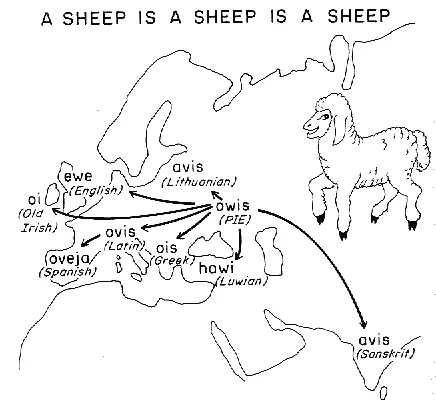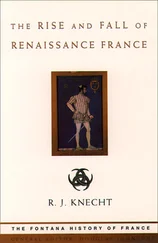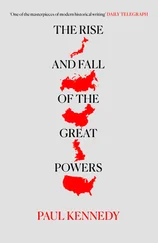Jared Diamond - The rise and fall of the third chimpanzee
Здесь есть возможность читать онлайн «Jared Diamond - The rise and fall of the third chimpanzee» весь текст электронной книги совершенно бесплатно (целиком полную версию без сокращений). В некоторых случаях можно слушать аудио, скачать через торрент в формате fb2 и присутствует краткое содержание. Год выпуска: 1991, ISBN: 1991, Издательство: RADIUS, Жанр: Биология, на английском языке. Описание произведения, (предисловие) а так же отзывы посетителей доступны на портале библиотеки ЛибКат.
- Название:The rise and fall of the third chimpanzee
- Автор:
- Издательство:RADIUS
- Жанр:
- Год:1991
- ISBN:0-09-174268-4
- Рейтинг книги:4 / 5. Голосов: 1
-
Избранное:Добавить в избранное
- Отзывы:
-
Ваша оценка:
- 80
- 1
- 2
- 3
- 4
- 5
The rise and fall of the third chimpanzee: краткое содержание, описание и аннотация
Предлагаем к чтению аннотацию, описание, краткое содержание или предисловие (зависит от того, что написал сам автор книги «The rise and fall of the third chimpanzee»). Если вы не нашли необходимую информацию о книге — напишите в комментариях, мы постараемся отыскать её.
The rise and fall of the third chimpanzee — читать онлайн бесплатно полную книгу (весь текст) целиком
Ниже представлен текст книги, разбитый по страницам. Система сохранения места последней прочитанной страницы, позволяет с удобством читать онлайн бесплатно книгу «The rise and fall of the third chimpanzee», без необходимости каждый раз заново искать на чём Вы остановились. Поставьте закладку, и сможете в любой момент перейти на страницу, на которой закончили чтение.
Интервал:
Закладка:
Linguists studying several Indo-European languages have similarly detected words borrowed from vanished, apparently non-Indo-European languages. For example, about one-sixth of Greek words whose derivations can be traced appear to be non-Indo-European. These words are just the sort that one might expect to have been borrowed by invading Greeks from the natives they encountered: place names like Corinth and Olympus, words for Greek crops like olive and vine, and names of gods or heroes like Athene and Odysseus. These words may be the linguistic legacy of Greece's pre-Indo-European population to the Greek speakers who overran them. Thus, at least four types of evidence indicate that Indo-European languages are the products of an ancient steamroller. The evidence includes the family-tree relationship of surviving Indo-European languages; the much greater linguistic diversity of areas like New Guinea, that have not been recently overrun; the non-Indo-European languages that survived in Europe into Roman times or later; and the non-Indo-European legacy in several Indo-European languages. Given this evidence for an Indo-European mother tongue in the distant past, can one reconstruct something of this tongue? At first, the notion of learning how to write a vanished unwritten language seems absurd. In fact, linguists have been able to reconstruct much of the mother tongue by examining word roots shared among its daughter languages.
To take an example, if the word meaning 'sheep' were totally different in each modern Indo-European language branch, we could conclude nothing about the word for 'sheep' in the mother tongue. But if the word were similar in several branches, especially in ones as geographically distant as Indo-Iranian and Celtic, we might infer that the various branches had wherited the same root from the mother tongue. By knowing what sound shifts have taken place among the various daughter tongues, we could even reconstruct the form of the word root in the mother tongue.

In many modern Indo-European languages, as well as in some ancient ones that we know from preserved writings, the words meaning 'sheep' are quite similar. These words must have been derived from an ancestral form that is inferred to have been owis and that was used in proto-Indo-European (PIE), the unwritten mother tongue.
As the figure above shows, the words for 'sheep' in many Indo-European languages from India to Ireland really are very similar: avis, hawis, ovis, ois, oi, etc. The modern English 'sheep' is obviously from a different root, but English retains the original root in the word 'ewe'. Consideration of the sound shifts that the various Indo-European languages have undergone suggests that the original form was owis.

Just as in the case of words for 'sheep', the words that mean 'to fart loudly' are similar among many written Indo-European languages. This suggests an ancestral form perd, used in proto-Indo-European (PIE), the unwritten mother tongue.
Naturally, the same word root shared among several daughter languages does not automatically prove shared inheritance from the mother tongue. The word could also have spread later from one daughter language to another. Archaeologists sceptical of linguists' attempts to reconstruct mother tongues love to cite words like 'Coca-Cola', shared among many modern European languages. The archaeologists claim that linguists would absurdly attribute 'Coca-Cola' to the mother tongue of thousands of years ago. In fact, 'Coca-Cola' illustrates how linguists weed out recent borrowings from old inheritances: the word is obviously foreign ('coca' is actually from a Peruvian Indian word, 'cola' West African), and it does not exhibit the same sound shifts among languages as do old Indo-European roots (in German it is still 'Coca-Cola', not Kocherkohler). By such methods, linguists have been able to reconstruct much of the grammar and nearly 2,000 word roots of the mother tongue, termed proto-Indo-European but usually abbreviated as PIE. That is not to say that all words in modern Indo-European languages are descended from "IE: most are not, because there have been so many new inventions or borrowings (like the root 'sheep' replacing the old PIE root owis in English). Our inherited PIE roots tend to be words for human universals that people surely were already naming thousands of years ago: words for the numbers and human relationships (as in the table on page 226); words for body parts and functions; and ubiquitous objects or concepts like 'sky', 'night', 'summer', and 'cold'. Among the human universals thus reconstructed are such homely acts as 'to break wind', with two distinct roots in PIE depending on whether one does it loudly or softly. The root for doing it loudly (PIE perd) gave rise to a series of similar words in modern Indo-European languages (perdet, pardate, etc.)—including English 'fart' (see figure on page 235, and sample text on pages 248—9). So far, we have seen how linguists have been able to extract, from written languages, evidence of a pre-literate mother tongue and steamroller. The obvious next questions are: when was PIE spoken, where was it spoken, and how was it able to overwhelm so many other languages? Let's begin with the matter of'when', another seemingly impossible question. It is bad enough that we have to infer the words of an unwritten language; how on earth do we determine when it was spoken?
We can at least start to narrow down the possibilities, by examining the oldest written samples of Indo-European languages. For a long time, the oldest samples that scholars could identify were Iranian texts of around 1000-800 BC, and Sanskrit texts probably composed around 1200–1000 BC but written down later. Texts of a Mesopotamian kingdom called Mitanni, written in a non-Indo-European language but containing some words obviously borrowed from a language related to Sanskrit, push the proven existence of Sanskrit-like languages back to nearly 1500 BC. The next breakthrough was the late-nineteenth-century discovery of a mass of ancient Egyptian diplomatic correspondence. Most of it was written in a Semitic language, but two letters in an unknown language remained a mystery until excavations in Turkey uncovered thousands of tablets in the same tongue. The tablets proved to be the archives of a kingdom that thrived between 1650 and 1200 BC and that we now refer to by the biblical name 'Hittite'. In 1917 scholars were astonished by the announcement that the Hittite language proved on deciphering to belong to a previously unknown, very distinctive and archaic, now-vanished branch of the Indo-European family, termed Anatolian. Some obviously Hittite-like names mentioned in earlier letters of Assyrian merchants at a trading post near the Hittite capital's future site push the detective trail back to nearly 1900 BC. This remains our first direct evidence for the existence of any Indo-European language.
Thus, as of 1917, two Indo-European branches—Anatolian and Indo-Iranian—had been shown to exist by around 1900 and 1500 BC, respectively. A third early branch was established in 1952, when the young British cryptographer, Michael Ventris, showed that the so-called Linear B writing of Crete and Greece, which had resisted deciphering since its discovery around 1900, was an early form of the Greek language. Those Linear B tablets date to around 1300 BC. But Hittite, Sanskrit, and early Greek are very different from each other, certainly more so than are modern French and Spanish, which diverged over a thousand years ago. That suggests that the Hittite, Sanskrit, and Greek branches must have split off from PIE by 2500 BC or earlier. How much earlier do the differences between those branches imply? How can we obtain a calibration factor that converts 'percentage difference between languages' into 'time since the languages began to diverge'? Some linguists use the rate of word change in historically documented, written languages, like the changes from Anglo-Saxon to Chaucer's English to Modern English. These calculations, which belong to a science called glottochronology (or chronology of languages), yield the rule of thumb that languages replace about twenty per cent of their basic vocabulary every thousand years.
Читать дальшеИнтервал:
Закладка:
Похожие книги на «The rise and fall of the third chimpanzee»
Представляем Вашему вниманию похожие книги на «The rise and fall of the third chimpanzee» списком для выбора. Мы отобрали схожую по названию и смыслу литературу в надежде предоставить читателям больше вариантов отыскать новые, интересные, ещё непрочитанные произведения.
Обсуждение, отзывы о книге «The rise and fall of the third chimpanzee» и просто собственные мнения читателей. Оставьте ваши комментарии, напишите, что Вы думаете о произведении, его смысле или главных героях. Укажите что конкретно понравилось, а что нет, и почему Вы так считаете.












